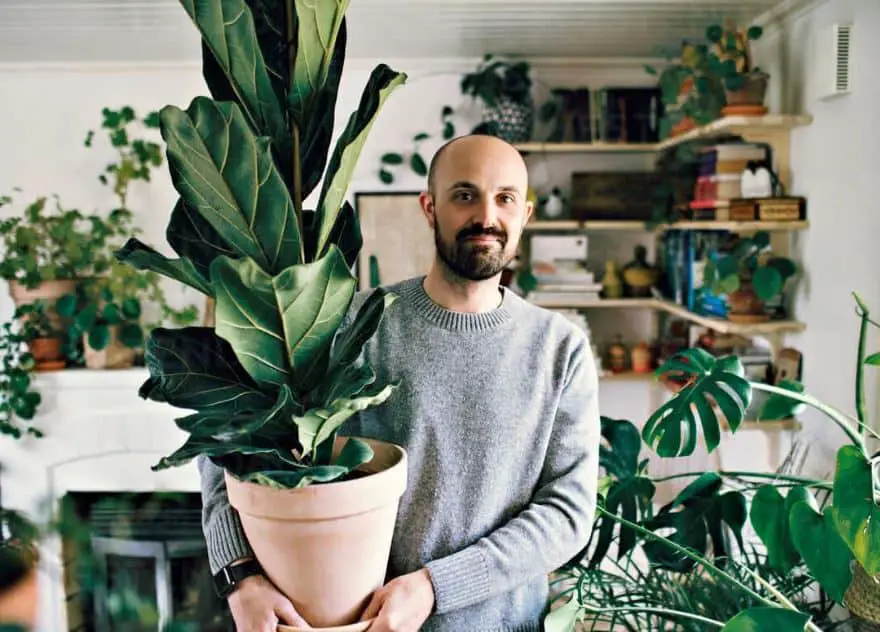A Great Basin bristlecone pine named Methuselah was discovered in the California White Mountains, and ring counting has shown that it is 4,854 years old. Certain houseplants live long, yet they can never reach this wonderful age.
What is the lifespan of houseplants? Naturally, it depends on the kind of plant, environment, and attention it gets. The Eastern Cape gigantic cycad, which has been living at the Kew for 240 years, is the oldest houseplant scientifically shown to exist. Continue reading to discover our top 8 long-lasting indoor plants if you want to break the record for the oldest houseplant in the Guinness Book of World Records.

Top 8 Long-Lasting Houseplants
- Slow-growing succulents called jade plants (Crassula ovata) are indigenous to South Africa and Mozambique. How old are jade plants? Jade plants are simple, low-maintenance houseplants that may easily live to be 100 years old. They are also known as “fortune plants,” “lucky plants,” or “money trees,” and they represent good fortune. Your jade will produce good energy and fortune for many years if you give it lots of light, use moderate amounts of water, and clip the plant back if it becomes lanky.
- Given its erect, saber-shaped leaves, snake plants (Dracaena trifasciata) are often planted inside and in apartments. Only water snake plants when the soil dries and grows in bright, indirect sunshine. Snake plants are excellent houseplants for beginners since they are hard to destroy. What is the lifespan of a snake plant? Most plants only live for up to ten years, but those that get exceptional care and are placed properly may live for up to twenty-five.
- Christmas cacti may live so long and prosper that they are sometimes passed down from generation to generation. When cultivated in medium to brilliant indirect light, these flowering cacti may survive for up to a century and are simple to divide. Before watering, let the top inch (2.5 cm) of soil dry out. During the growth season, fertilize with water-soluble food. Although it may be challenging to get the plant to bloom, if you follow a few easy instructions, your Christmas cactus should reward you with a profusion of vibrant flowers that linger for six to eight weeks right around the holidays.
- William John Burchell discovered lithops in 1811; they don’t resemble conventional plants but tiny stones. This unusual plant has at least 37 species, and more are continually being found. Lithops are indoor novelty plants that do well under low humidity with minimal maintenance. These little succulents may easily survive in the same pot for a decade or two and can live up to 40 to 50 years.
- The foliage of Scheffler, which has lovely oval leaflets grouped in an umbrella spoke pattern, attracts people to them. Scheffleras, sometimes known as umbrella plants, may reach heights of up to 10 feet (3 meters) in ideal conditions. However, they can be cut to grow smaller. Scheffleras like bright to moderate light, with daily temperatures between 65 and 75 degrees F (18 and 24 degrees C) and nocturnal temperatures that aren’t much lower. Before watering, let the soil’s top half inch (1 cm) dry, and avoid letting the plant sit in a saucer of water. Avoid placing this plant near vents or draughts. You may use your Schefflera for 25 years or even longer with the right maintenance.
- As tough as it seems, the cast iron plant (Aspidistra elatior) is. Cast iron plants are almost unbreakable, thriving in low light, poor air quality, and warm or cold temperatures. Cast iron plants are slow-growing and produce only a few paddle-like leaves yearly. They don’t often need transplanting and are happy in most of the house. According to some sources, this plant is renowned for lasting 50 years or more.
- In their native environment of Southeast Asia, rubber tree plants (Ficus elastica) have been reported to survive for over 100 years; however, they typically only last 10 years or so as houseplants. Rubber tree plants flourish in bright, indirect light and well-draining soil, growing to a height of around 10 feet (3 m). Rubber trees, the pinnacle of tropical plants, feature enormous, glossy green leaves. Keep rubber trees away from draughts and heating vents, and maintain stable temperatures of 60 to 75 degrees F (16-24 C), as with most tropical indoor plants. To mimic the humid environment they normally grow in, water rubber trees once a week, wipe the leaves with a moist towel or use a tiny humidifier.
- A peculiar plant known as the ponytail palm (Beaucarnea recurvata) produces leaves that resemble palm trees from a huge bulb that protrudes partly from the ground. These succulents, native to Mexico, may reach heights of 30 feet (9 meters) and have sprays of creamy blooms. Ponytail palms grow slowly, averaging less than a foot (31 cm) each year, and may survive for several decades or perhaps a century. Ponytails are the ideal indoor plant due to their low humidity tolerance and ability to tolerate indirect light. Overwatering is the greatest threat to ponytail palms since it may cause rot. Since the species may go for weeks without water, wait until the top inch (2.5 cm) of soil is completely dry before watering.
Most houseplants survive between five and 10 years on average, although some may live up to twenty years or more. This is sometimes caused by the kind of plant but more often by the grower’s attention to detail. If you want your houseplants to live long and healthy lives, you must know their specific water, soil, temperature, humidity, and nutrient requirements.


